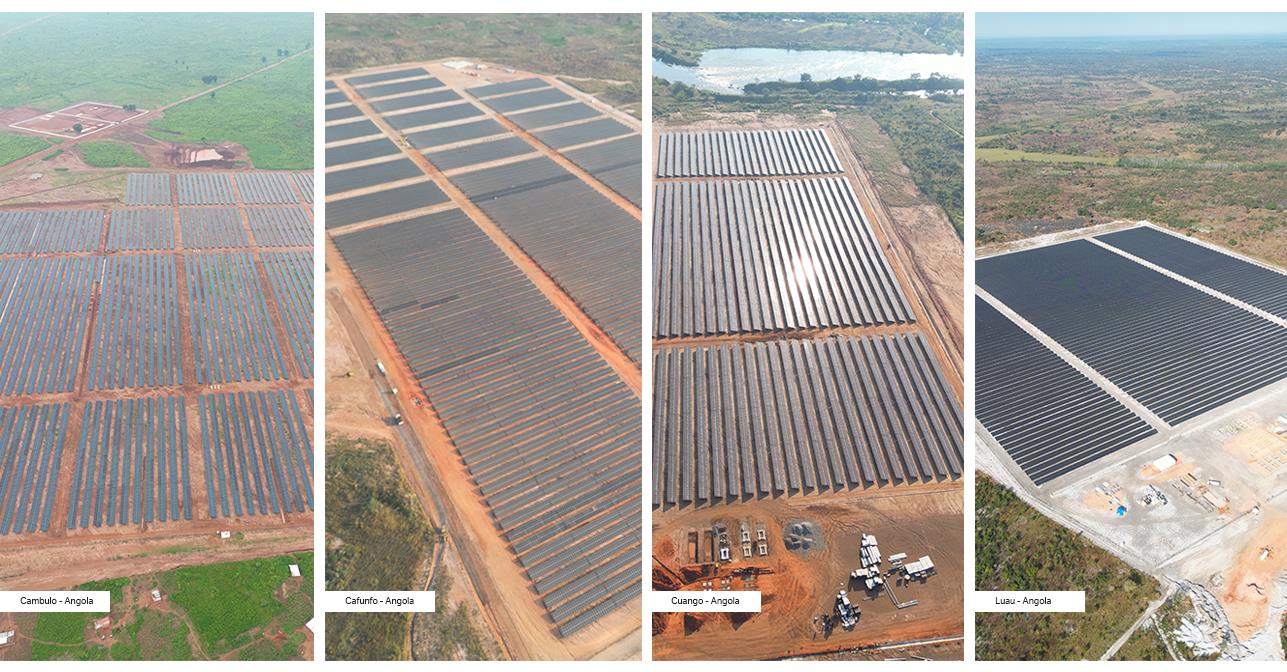
Location
Angola, Africa
Overview
Under the Angola 2025 Plan, the Government of Angola is striving to deliver electricity to both urban and isolated rural communities in Angola. Within one of the most significant renewable energy initiatives in Sub-Saharan Africa, the Government moved to electrify 60 communes in the Provinces of Malanje, Bié, Moxico, Moxico Leste, Lunda Norte, and Lunda Sul. The project includes two workstreams: the expansion of the national electricity grid and the construction of independent off-grid photovoltaic parks with battery energy storage systems, as isolated systems for electricity production and supply. The project is expected to electrify about 203,000 homes and provide energy for around 1 million Angolans.
Markets
The project
The rural electrification project combines solar generation with advanced battery storage to provide accessible and dependable, renewable electricity. The project stipulates building solar photovoltaic generation parks, coupled with battery systems, located near the points of consumption and capable of providing accessible and sustainable energy to nearby communities. By doing so, stakeholders eliminate the need to transport energy over long distances and significantly reduce the need to purchase and transport diesel, which had commonly been used to generate electricity in remote locations.
Spanning the six provinces, the project will deliver power to approximately 203,000 homes and one million people, through an integrated set of works:
- Electrification of 60 Communes with a total of 203,000 House connection serving around one million People in rural areas .
- 595 MWh of battery storage capacity ensuring reliability and continuity of supply.
- 46 isolated solar with a total capacity of 256 MWdc + storage systems serving fully off-grid communities.
- 14 grid-connected systems, supported by three new substations and expansion of two substations
- Major grid infrastructure upgrades, including the expansion of Malanje’s 110/30 kV substation, Andulo 220/30 kV Substationand construction of two new 110/30 kV substations in Malange province, supported by new 110 kV and 220 kV transmission lines.
Collectively, these components will transform the energy infrastructure in the six provinces, bridging isolated communities to national and local grids while integrating renewable sources into the wider network. This program combines national priorities with global sustainability goals, setting a course for inclusive and resilient growth. expanding reliable energy access to remote communities while diversifying the national power sector.
Beyond the kilowatts: social and economic impact
The electrification of these 60 remote districts is an infrastructure initiative that truly drives social transformation. It is estimated that the program will avoid between 4.2 and 8 million tons of CO₂ emissions and generate long-term economic value and productivity gains, including between 3.1 and 5.9 billion euros of savings compared to alternative solutions and gains in population income directly associated with the project. Moreover, by providing affordable, renewable, and reliable electricity, the project allows new opportunities across Angola, including:
- Improved living conditions and greater availability of energy services for local communities.
- Schools and hospitals powered for better education and healthcare.
- Farmers and businesses able to grow and innovate with dependable energy.
- Job creation and regional development opportunities.
- Cleaner air and healthier environments through reduced diesel use.
Dar was honoured to provide extensive consultancy services to facilitate this critical project, supporting public and private stakeholders in helping turn a sustainable power-access strategy into reality and ensuring that the infrastructure truly serves Angola’s communities for generations to come.
